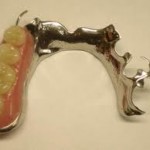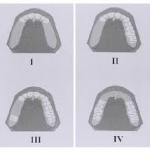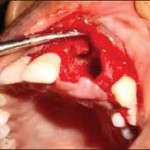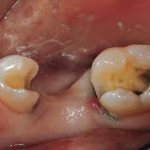PARTIAL DENTURE
Definition
A dental prosthesis that restores one or more but not all of the natural teeth and/or associated parts and that is supported in part by natural teeth, dental implant supported crowns, abutments, or other fixed partial dentures and /or the mucosa; usage: a partial denture should be described as a fixed partial denture or removable partial denture based on the patient’s capability to remove or not remove the prosthesis.
REMOVABLE PARTIAL DENTURE CLASSIFICATION
 The purpose of this classification system is to provide a framework for the organization of clinical observations. Clinical variables that establish different levels of partial edentulism are organized in a simplified, sequential progression designed to facilitate consistent and predictable treatment planning decisions. This framework is designed to indicate increasing levels of diagnostic and treatment complexity presented by patients with varying degrees of partial edentulism. This may suggest points at which referral to other specialists is appropriate.
The purpose of this classification system is to provide a framework for the organization of clinical observations. Clinical variables that establish different levels of partial edentulism are organized in a simplified, sequential progression designed to facilitate consistent and predictable treatment planning decisions. This framework is designed to indicate increasing levels of diagnostic and treatment complexity presented by patients with varying degrees of partial edentulism. This may suggest points at which referral to other specialists is appropriate.
The framework is structured to support diagnostically driven treatment plan options and will also be useful in an educational environment for triaging the patient upon entry into an institutional setting.
KENNEDY CLASSIFICATION SYSTEM
CLASS I – Bilateral Posterior Edentulous Areas
CLASS II – Unilateral Posterior Edentulous Area
CLASS III – Unilateral or Bilateral Edentulous Area(s) Bounded by Remaining Tooth/Teeth
CLASS IV – Single Edentulous Area Anterior to Remaining Teeth and Crossing the Midline
1. Classification follows all mouth preparations including extractions
2. Edentulous areas with no teeth replacements are not considered
3. Third molars are not considered unless present or being replaced
4. Additional edentulous areas are “modification spacesâ€
a. Anterior space – A
b. Posterior space – P
5. Class I or II situations take precedence over IV situations
6. A Class III situation takes precedence over a Class IV situation.
ACP Classification System
This section describes four broad diagnostic categories relevant to classification of partially edentulous patients:
1. Location and extent of the edentulous area(s)
2. Condition of abutments
3. Occlusion
4. Residual ridge characteristics.
The criteria descriptions begin with the least complicated and progress to the most complicated. The diagnostic criteria are as follows.
Criteria 1: Location and Extent of the Edentulous Area(s)
A. Ideal or minimally compromised edentulous area
The edentulous span is confined to a single arch and 1 of the following:
â— Any anterior maxillary edentulous area that does not exceed 2 incisors
â— Any anterior mandibular edentulous area that does not exceed 4 incisors
â— Any posterior maxillary or mandibular edentulous area that does not exceed 2 premolars, or 1 premolar and 1 molar.
B. Moderately compromised edentulous area
Edentulous areas in both arches and in 1 of the following:
â— Any anterior maxillary edentulous area that does not exceed 2 incisors
â— Any anterior mandibular edentulous area that does not exceed 4 incisors
â— Any posterior maxillary or mandibular edentulous area that does not exceed 2 premolars, or 1 premolar and 1 molar
â— A missing maxillary or mandibular canine.
C. Substantially compromised edentulous area
â— Any posterior maxillary or mandibular edentulous area greater than 3 teeth or 2 molars
â— Any edentulous areas including anterior and posterior areas of 3 or more teeth.
D. Severely compromised edentulous area
Any edentulous area or combination of edentulous areas requiring a high level of patient compliance.
Criteria 2: Abutment Conditions
A. Ideal or minimally compromised abutment conditions
No preprosthetic therapy is indicated.
B. Moderately compromised abutment condition
â— Abutments in 1 or 2 sextants* have insufficient tooth structure to retain or support intracoronal or extracoronal restorations.
â— Abutments in 1 or 2 sextants require localized adjunctive therapy (ie, periodontal, endodontic, or orthodontic procedures).
C. Substantially compromised abutment condition
â— Abutments in 3 sextants have insufficient tooth structure to retain or support intracoronal or extracoronal restorations.
â— Abutments in 3 sextants require more substantial localized adjunctive therapy (ie, periodontal, endodontic, or orthodontic procedures).
D. Severely compromised abutment condition
â— Abutments in 4 or more sextants have insufficient tooth structure to retain or support intracoronal or extracoronal restorations.
â— Abutments in 4 or more sextants require extensive adjunctive therapy (ie, periodontal, endodontic, or orthodontic procedures).
â— Abutments have guarded prognoses.
Criteria 3: Occlusion
A. Ideal or minimally compromised occlusal characteristics
â— No preprosthetic therapy is required
â— Class I molar and jaw relationships are seen.
B. Moderately compromised occlusal characteristics
â— Occlusion requires localized adjunctive therapy (eg, enameloplasty on premature occlusal contacts).
â— Class I molar and jaw relationships are seen.
C. Substantially compromised occlusal characteristics
â— Entire occlusion must be reestablished, but without any change in the occlusal vertical dimension.
â— Class II molar and jaw relationships are seen.
D. Severely compromised occlusal characteristics
â— Entire occlusion must be reestablished, including changes in the occlusal vertical dimension.
â— Class II division 2 and Class III molar and jaw relationships are seen.


